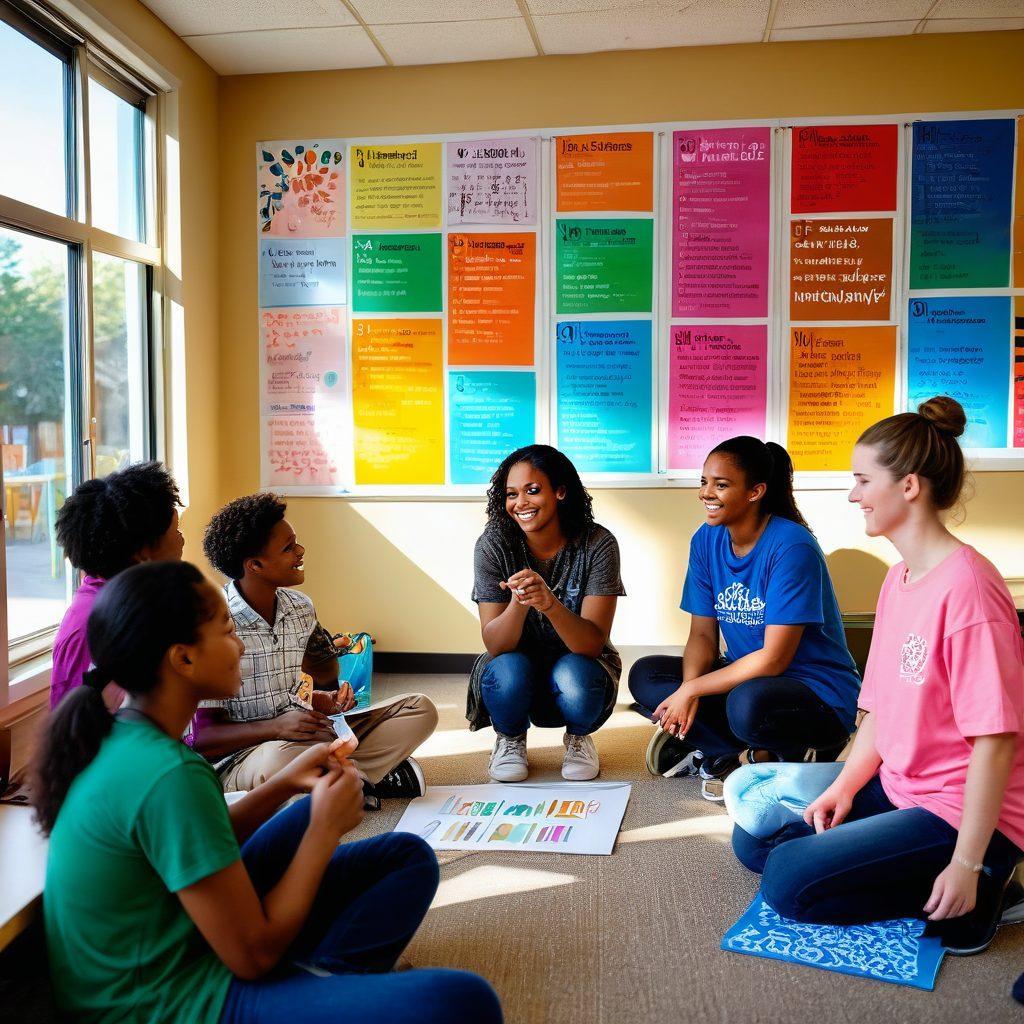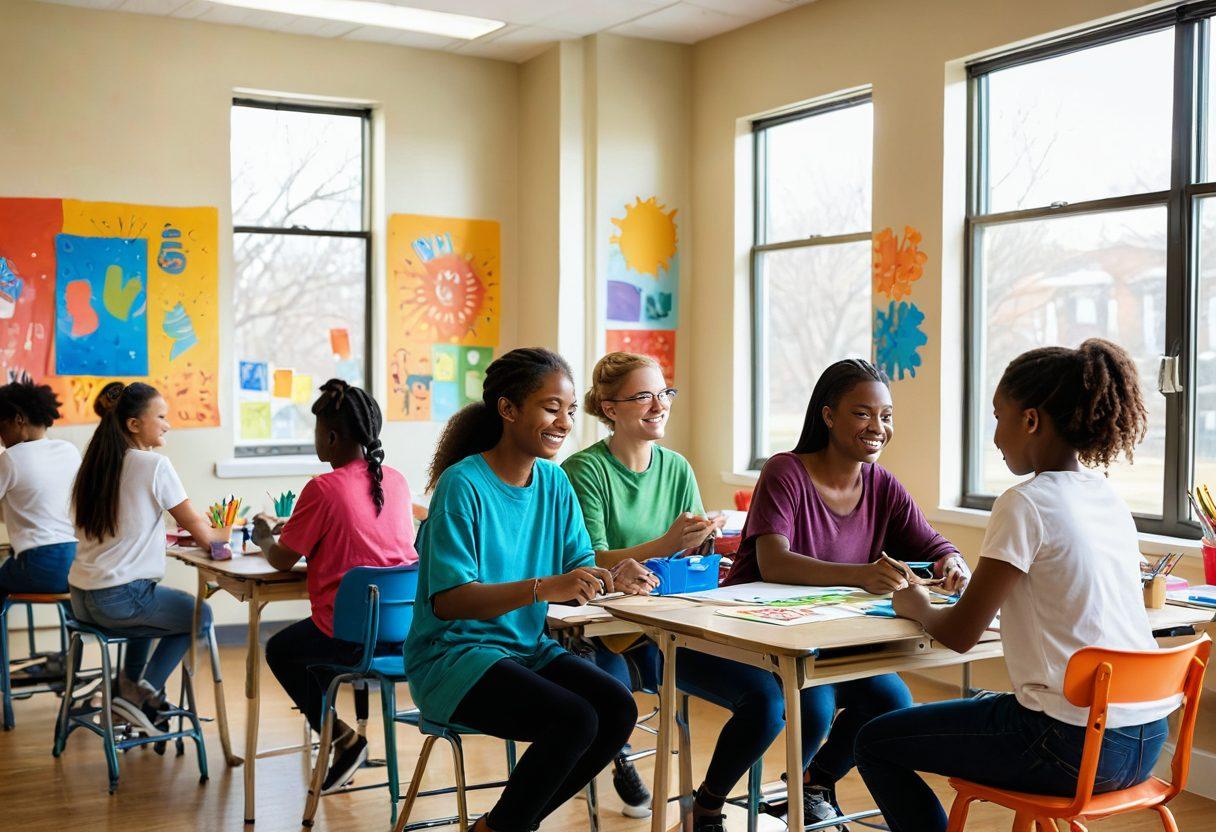Navigating Sadness in the Classroom: Enhancing Student Engagement and Support at SMKN2
In the vibrant halls of SMKN2, where education meets innovation, emotions run as deep as the ocean. Sadness, perhaps one of the most misunderstood emotions, often lingers just beneath the surface of a typical high school day. Yet, it is a part of the human experience that our academic community cannot afford to overlook. How can we transform this often-ignored aspect of student life into something positive? The answer lies in understanding sadness and adopting transformative strategies that not only enhance student well-being but also foster an engaging learning environment.
Imagine stepping into a classroom where sadness is acknowledged and addressed rather than ignored. This is not just a dream—this is a possibility that can reshape our education system. By integrating emotional intelligence into the educational curriculum at SMKN2, our teaching methods can evolve. Educators can encourage pupils and scholars alike to express their emotions, and in turn, cultivate a classroom atmosphere that is empathetic and supportive. Just imagine a classroom activity where students openly share stories of overcoming sadness. How can this openness empower students to face challenges together?
The importance of peer support cannot be overstated in combating feelings of sadness. When students engage in extracurricular activities, they form bonds that create a tight-knit community within SMKN2. Isn’t it amazing how shared experiences can act as a balm for emotional pain? Whether it's through a sports team or a club dedicated to a cause they care about, these connections encourage student development, boost school spirit, and enhance overall academic achievement. Remember, it’s often our peers who help us navigate our emotional journeys.
However, it isn't just about feeling good—it’s about creating actionable strategies that ensure that sadness does not hinder academic progress. The implementation of curricular programs aimed at emotional resilience can enhance students’ coping mechanisms in challenging times. Think about it: teaching pupils to manage their emotions allows them to participate fully in learning activities and prepares them for future challenges in life. What if every student, regardless of their struggles, had access to learning resources that catered to emotional well-being? The transformations would be profound!
In conclusion, transforming emotions within the walls of SMKN2 is not just a goal—it’s a necessity. By fostering a supportive learning environment that acknowledges sadness and fosters peer support, we can create a high school experience that nurtures both the heart and mind. Each classroom activity infused with empathy contributes to a broader educational landscape where engagement and emotional health thrive together. Let’s embark on this journey together, to create a brighter educational future that upholds not just academic success but the holistic well-being of every scholar who walks through our doors.
Boosting Engagement: Innovative Classroom Activities to Combat Sadness
In the vibrant halls of SMKN2, an unwavering spirit often fills the air, yet like any high school, sadness can sometimes seep into the hearts of our pupils. Managing emotions is a crucial part of the education system, as students often grapple with the pressures of academic achievement. But how can we enhance student engagement to combat this sadness? The answer may lie within innovative classroom activities designed not just to fill time, but to spark camaraderie and reignite school spirit among our scholars.
Imagine a room buzzing with excitement, where laughter echoes off the walls and students are fully invested in their learning environment. Engaging students amid academic pressure requires creativity and a thoughtful approach. One effective method is to incorporate team-based projects that foster peer support. When pupils collaborate on real-world problems, they're not only learning valuable skills but also cultivating friendships and emotional bonds that can drastically reduce feelings of isolation and sadness.
Consider a classroom activity where students brainstorm solutions to local community issues. This hands-on project not only aligns with the educational curriculum but also empowers students, allowing them to see their emotions and ideas turn into action. By engaging in meaningful dialogue and supporting one another, students build a network of trust and belonging—elements crucial for emotional well-being. As educators, we need to ask ourselves: How can we better harness the collective enthusiasm of our students to enhance their learning experience?
Extracurricular activities also play a pivotal role in student development. Clubs, sports, and creative workshops give students an outlet to express themselves and build connections with peers. These activities add layers to an already rich educational curriculum, providing students with varied experiences that keep their spirits high. Imagine the joy of a student who, after a stressful week of exams, finds solace in the art club or the thrill of the basketball game. These moments can make all the difference in their academic journey.
Ultimately, boosting engagement in the classroom goes beyond just preventing sadness; it cultivates a thriving academic community. Educators at SMKN2 can leverage these innovative activities to create a dynamic learning atmosphere where emotions are recognized and addressed. By fostering connections and emphasizing student engagement through both curricular programs and extracurricular activities, we can help our pupils not only achieve academically but also grow into well-rounded individuals prepared to face the world. So let's create a learning environment where sadness does not overshadow joy, but instead, becomes a stepping stone for deeper connection and engagement.
Building Resilience: Fostering Peer Support in the SMKN2 Learning Community
In every corner of the SMKN2 school building, there's a quiet truth that resonates among the pupils: sadness is a part of the human experience, particularly in the world of education. In the high-stakes environment of the learning community, where academic achievement is paramount, emotions can often be swept under the rug. However, what if we embraced those emotions instead? What if we transformed sadness into a powerful catalyst for building resilience and deeper peer support? This blog explores how fostering empathy and connection can significantly enhance student engagement in our academic community.
Imagine walking through a classroom where students not only share knowledge, but also their struggles and triumphs. Picture a curriculum that weaves in emotional literacy, allowing pupils to express their feelings openly. As educators, we can create a learning environment that values the importance of addressing emotions, including sadness. Research shows that when scholars feel secure discussing their emotions, they thrive academically and socially. So, how do we achieve this? The answer lies in changing our teaching methods to encompass peer support systems within our educational curriculum.
Building resilience is not merely about teaching pupils how to cope with sadness; it’s about creating an atmosphere where they can learn from each other. Peer support can take many forms, such as mentorship programs and collaborative classroom activities where students engage with one another, sharing their challenges and solutions. By encouraging these connections, we pave the way for a stronger school spirit and a sense of belonging. As one student once poignantly said, 'When I share my sadness, it helps me find my strength.' Such interactions can reinforce positive emotional experiences, ultimately leading to improved student development.
At SMKN2, we have an incredible opportunity to integrate extracurricular activities that further reinforce peer support. Imagine organizing workshops that focus on emotional intelligence, where scholars can learn to navigate their feelings collectively while strengthening their bonds. Moreover, our educational resources can spotlight mental health, providing insights into understanding sadness and other emotions. This addition to our curricular programs can empower pupils to view challenges as a shared experience rather than an individual struggle, fostering a more inclusive and supportive academic community.
In conclusion, navigating sadness shouldn’t be seen as a burden within the SMKN2 school walls but rather as a communal journey toward resilience. By fostering peer support and tailoring our learning environment to address emotions, we can create a school culture that celebrates both academic and emotional growth. After all, the greatest lessons learned in high school come not only from textbooks but from each other. As we move forward, let us ask ourselves: How can we continue to build these essential connections in our classrooms? Together, we can transform sadness into an opportunity for deeper engagement, connection, and lasting change.


